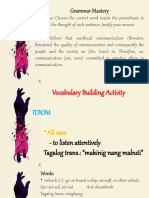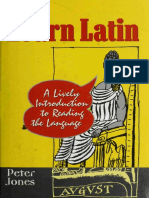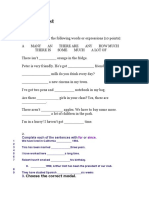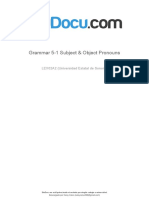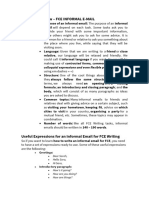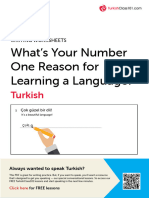0% found this document useful (0 votes)
11 views24 pagesMORPHOLOGY
Morphology is the study of word formation and structure in linguistics, focusing on the smallest meaning-bearing units called morphemes. It includes inflection, which alters a word's form to convey grammatical distinctions, and derivation, which forms new words by modifying base words or adding affixes. Various word formation processes such as compounding, clipping, blending, and borrowing illustrate how new words are created in a language.
Uploaded by
Shane FrancesCopyright
© © All Rights Reserved
We take content rights seriously. If you suspect this is your content, claim it here.
Available Formats
Download as PDF, TXT or read online on Scribd
0% found this document useful (0 votes)
11 views24 pagesMORPHOLOGY
Morphology is the study of word formation and structure in linguistics, focusing on the smallest meaning-bearing units called morphemes. It includes inflection, which alters a word's form to convey grammatical distinctions, and derivation, which forms new words by modifying base words or adding affixes. Various word formation processes such as compounding, clipping, blending, and borrowing illustrate how new words are created in a language.
Uploaded by
Shane FrancesCopyright
© © All Rights Reserved
We take content rights seriously. If you suspect this is your content, claim it here.
Available Formats
Download as PDF, TXT or read online on Scribd
/ 24




